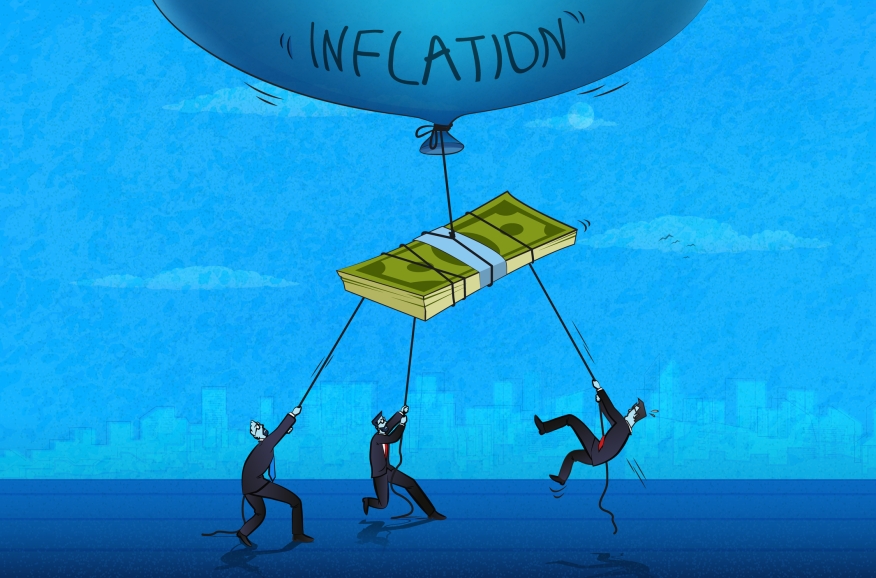
March Inflation Heavily Impacted By Russia-Ukraine War, Fannie Mae Reports

March inflation reports were heavily impacted by the energy price spike caused by Russia’s invasion of Ukraine.
- Inflation is everywhere and it’s accelerating rapidly, but why? It comes down to soaring energy prices, which increased 11% for the month and 32% for the year in March 2022.
- Gasoline prices popped 18.3% for the month due to the war in Ukraine and the pressure it is exerting on supply.
- The Fannie Mae Home Price Index, excluding condos, rose 20% year-over-year in the first quarter of 2022 — the fastest annual pace in the 47-year history of the series.
- Fannie Mae’s report suggests the Fed will act aggressively to combat rising rates, meaning a 50 basis point hike in the federal funds and the commencement of the balance sheet runoff are both likely in May.
Inflation is everywhere and it’s accelerating rapidly, but why? The Consumer Price Index (CPI) jumped 1.2% in March, marking the largest one-month gain since September 2005, according to the Bureau of Labor Statistics (BLS).
Prices were up 8.5% annually, which is the fastest pace since 1981 and an acceleration of six-tenths from February. The reasoning behind it comes down to soaring energy prices, which increased 11% for the month and 32% for the year in March 2022. Gasoline prices jumped 18.3% for the month due to the war in Ukraine and the pressure it is exerting on supply.
Airline fare increased 10% due to high oil prices and rebounding demand to travel. Rental prices and the owners’ equivalent rent were up 0.4%, a deceleration of two-tenths since February for the former and flat growth for the latter. Core CPI, excluding food and energy costs, increased 0.3% over the past month and 6.5% over the year. Although the core CPI decelerated, it was heavily influenced by a 3.8% drop in used car and truck prices.
The Producer Price Index (PPI) for final demand of goods and services rose 1.4% in March, marking the largest monthly gain since the series began in 2010, according to the BLS. Producer prices rose 11.2% annually, marking another series record. This gain was driven by a 5.7% jump in energy prices and a 2.4% gain for food, though prices of services also rose a significant 0.9% in March and 7% annually.
The Fannie Mae Home Price Index, excluding condos, rose 20% year-over-year in the first quarter of 2022 — the fastest annual pace in the 47-year history of the series.
Overall, the March inflation reports were heavily impacted by the energy price spike caused by Russia’s invasion of Ukraine. Since the invasion began, oil prices have pulled back significantly, which should provide some relief to the energy and gasoline components in April. Fannie Mae’s reports states this decline was likely one of the drivers in the increase in consumer sentiment in April.
Fannie Mae reports that the CPI peaked in March due to stronger annual base effect comparisons from 2021, expected future price stabilization in energy, and expected declines in auto and some other durable goods prices. However, the report does not suggest month-over-month core inflation to cool dramatically in the near term.
The report from Fannie Mae also states that wage pressures from the historically tight labor market will continue to feed through to consumer prices, which was evident in the National Federation of Independent Businesses (NFIB) survey that showed almost half of firms raising worker pay and nearly three in four increasing selling prices.
Furthermore, core producer price increases, which are thought to partially pass through to consumer prices, showed no signs of slowing.
Fannie Mae’s report suggests the Fed will act aggressively to combat rising rates, meaning a 50 basis point hike in the federal funds and the commencement of the balance sheet runoff are both likely in May. Fannie Mae previously stated that the exact impact of policy tightening on long-term rates is difficult to predict, but so far the Fed’s more hawkish tone prompted a sharp jump in mortgage rates, which hit 5% this week. This will likely weigh dramatically on housing activity this year and slow home price growth. The report states Fannie Mae is likely to downgrade their forecast for new and existing home sales.
Considering that consumer sentiment is still at its lowest level since 2011, it’s clear consumer spending is softening, which is consistent with Fannie Mae’s forecast for a significant slowdown in personal consumption growth in the second quarter this year.




